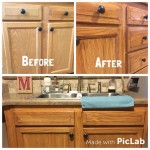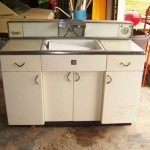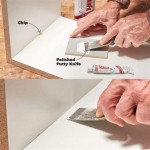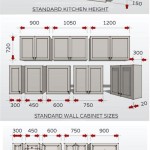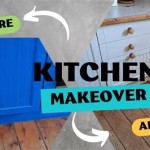Small Kitchen Cabinets and Countertops: Understanding the Cost
Renovating a small kitchen presents unique challenges, particularly when balancing functionality, aesthetics, and budget constraints. Cabinets and countertops are integral to kitchen design and often represent a significant portion of the overall renovation expense. Understanding the factors influencing the cost of small kitchen cabinets and countertops is crucial for effective planning and achieving desired results without exceeding financial limitations.
The size of the kitchen directly influences the quantity of materials required, thereby impacting the overall cost. However, the material selection, design complexity, and installation labor contribute significantly to the final price. This article will delve into the various elements that determine the cost of cabinets and countertops in a small kitchen, providing a comprehensive overview to aid homeowners in making informed decisions.
Cabinet Cost Factors
The cost of kitchen cabinets for a small space is influenced by several variables. These factors range from the cabinet material to the construction type and customization level. Analyzing these components is essential for establishing a realistic budget and making value-driven choices.
Cabinet Material: Cabinet boxes are commonly constructed from particleboard, medium-density fiberboard (MDF), or plywood. Particleboard is generally the most affordable option, though it is less durable and more susceptible to water damage. MDF provides a smoother surface for painting and is more resistant to warping than particleboard, making it a mid-range choice. Plywood is the most durable and moisture-resistant option, leading to a higher price point. The selection depends on budget and the expected lifespan of the cabinets. Solid wood is often used for cabinet doors and frames, with options like oak, maple, cherry, and walnut. Oak is often a more affordable, durable option, while cherry and walnut are pricier and offer a more luxurious aesthetic. The specific type of wood chosen significantly impacts the overall price of the cabinets.
Cabinet Construction: Cabinet construction typically falls into three categories: stock, semi-custom, and custom. Stock cabinets are pre-made and readily available in standard sizes and styles. They are the most budget-friendly option but offer limited customization. Semi-custom cabinets provide more flexibility in terms of sizes, finishes, and door styles, bridging the gap between stock and custom options. Custom cabinets are built to order, allowing for complete design control and optimal space utilization. As a result, they are the most expensive choice. In a small kitchen, maximizing space utilization is paramount, and while custom cabinets offer the best solution, semi-custom cabinets often provide a balanced approach of customization and cost-effectiveness.
Cabinet Style and Finish: The style of cabinet doors, such as shaker, flat-panel, raised-panel, or glass-front, affects the price. Shaker-style doors are a popular and versatile choice, offering a clean and timeless look at a moderate price. Flat-panel doors provide a minimalist aesthetic and are often more affordable. Raised-panel doors are more ornate and typically more expensive. Glass-front cabinets add visual interest and can make a small kitchen feel more spacious, but they also increase the cost due to the glass and specialized construction required. The finish applied to the cabinets also impacts the final cost. Painted cabinets generally cost more than stained cabinets due to the additional labor and materials involved in achieving a smooth, durable finish. The choice of paint or stain, as well as the number of coats applied, further influences the price.
Hardware and Accessories: Cabinet hardware, including knobs, pulls, hinges, and drawer slides, plays a significant role in both the aesthetics and functionality of the cabinets. High-quality hardware enhances the overall look and feel of the kitchen while improving the ease of use. The price of hardware varies widely, from basic, budget-friendly options to high-end, designer pieces. Accessories, such as pull-out shelves, spice racks, and drawer dividers, add convenience and organization to the cabinets. While they enhance functionality, they also increase the overall cost. Carefully considering the necessary hardware and accessories is essential for balancing practicality and budget.
Installation Costs: Professional cabinet installation is generally recommended to ensure proper alignment, secure mounting, and a seamless finish. The cost of installation varies depending on the complexity of the project, the number of cabinets being installed, and the geographic location. Factors such as removing existing cabinets, preparing the walls, and making necessary plumbing or electrical adjustments can also impact the installation cost. Obtaining multiple quotes from qualified contractors is crucial for comparing prices and finding the best value. While DIY installation can save money, it requires significant skill and experience to achieve a professional result. Improperly installed cabinets can lead to functional issues and aesthetic flaws, potentially resulting in costly repairs in the future.
Countertop Cost Factors
Countertops are a crucial element of any kitchen, both functionally and aesthetically. The material chosen for the countertop drastically impacts the cost, durability, and overall design of the kitchen. Selecting the right countertop for a small kitchen requires careful consideration of budget, usage patterns, and aesthetic preferences.
Countertop Material: The most common countertop materials include laminate, tile, solid surface, granite, quartz, and butcher block. Laminate is the most affordable option, offering a wide range of colors and patterns. It is relatively easy to maintain but is susceptible to scratches and heat damage. Tile countertops offer a durable and customizable option, but the grout lines can be difficult to clean and maintain. Solid surface countertops, such as Corian, are non-porous and seamless, offering a hygienic and easy-to-clean surface. They are available in a variety of colors and patterns but are typically more expensive than laminate. Granite is a natural stone that is highly durable and heat-resistant, offering a luxurious and timeless look. However, it requires sealing to prevent staining and can be quite expensive. Quartz countertops are engineered stone made from quartz crystals and resin, offering a durable, non-porous, and low-maintenance surface. They are available in a wide range of colors and patterns and are generally more expensive than granite. Butcher block countertops add warmth and character to a kitchen and are ideal for food preparation. They require regular maintenance, such as oiling, to prevent drying and cracking.
Countertop Size and Shape: The size and shape of the countertop directly influence the material required, thereby impacting the overall cost. Complex shapes, such as curves and angles, require more fabrication and installation labor, increasing the price. In a small kitchen, optimizing the countertop layout is crucial for maximizing usable space. Simple, straightforward designs are generally more cost-effective. Careful planning and accurate measurements are essential for minimizing waste and ensuring a proper fit.
Edge Profiles and Detailing: The edge profile of the countertop adds a finishing touch and can significantly impact the overall aesthetic. Common edge profiles include bullnose, eased edge, ogee, and bevel. More intricate edge profiles require more fabrication labor and increase the cost. Detailing, such as waterfall edges or integrated backsplashes, further enhances the look but also adds to the expense. Selecting a simple, clean edge profile can help to control costs while still achieving a polished look.
Installation Costs: Professional countertop installation is essential for ensuring a proper fit, level surface, and watertight seal. The cost of installation varies depending on the material, size, and complexity of the countertop. Granite and quartz countertops require specialized equipment and expertise for installation, leading to higher labor costs. Factors such as removing existing countertops, preparing the cabinets, and making necessary plumbing adjustments can also impact the installation cost. Obtaining multiple quotes from qualified contractors is crucial for comparing prices and finding the best value. Attempting DIY countertop installation can be risky, especially with heavy materials like granite and quartz. Improper installation can lead to cracks, leaks, and other issues, potentially resulting in costly repairs.
Sink and Faucet Cutouts: The cost of cutting out the sink and faucet holes is typically included in the countertop installation price. However, the complexity of the cutout can influence the cost. Undermount sinks, which are installed beneath the countertop, require more precise cutouts and are generally more expensive to install than drop-in sinks. The type of faucet chosen can also impact the cutout requirements. Some faucets require multiple holes for accessories such as soap dispensers or sprayers, increasing the complexity and cost of the installation.
Strategies for Cost Optimization
Renovating a small kitchen with a limited budget requires careful planning and strategic decision-making. Several strategies can be employed to optimize costs without compromising on quality or functionality. These strategies range from material selection to design choices and installation methods.
Prioritize Needs and Wants: Before starting the renovation process, it is essential to prioritize needs and wants. Identify the essential elements that are crucial for functionality and focus on allocating the budget accordingly. Distinguish between features that are desirable but not essential and consider deferring or eliminating them if necessary. For example, opting for stock cabinets instead of custom cabinets or choosing laminate countertops instead of granite can significantly reduce costs without sacrificing essential functionality.
Explore Affordable Material Options: Choosing affordable material options is a key strategy for controlling renovation costs. Laminate countertops offer a budget-friendly alternative to granite or quartz, while still providing a wide range of colors and patterns. Stock cabinets or semi-custom cabinets can be significantly less expensive than custom cabinets, while still offering a variety of styles and finishes. Consider exploring reclaimed materials or salvaged cabinets, which can add character and save money. Shop around and compare prices from different suppliers to find the best deals on materials. Look for sales, discounts, and closeout items to further reduce costs.
Consider DIY Options Carefully: While DIY installation can save money on labor costs, it is important to carefully consider the skills and experience required. Installing cabinets and countertops requires precision and attention to detail. Improper installation can lead to functional issues and aesthetic flaws, potentially resulting in costly repairs. Consider hiring a professional for tasks that require specialized skills or equipment, such as installing granite countertops or making complex plumbing or electrical adjustments. Focus on DIY tasks that are within your skill set, such as painting cabinets, installing hardware, or adding decorative elements. Be realistic about your abilities and time constraints to avoid making costly mistakes.
Optimize Layout and Design: Optimizing the layout and design of the kitchen can maximize space utilization and reduce material costs. Consider open shelving instead of upper cabinets to create a more spacious feel and reduce the amount of cabinetry required. Choose appliances that are appropriately sized for the space to avoid overcrowding. Maximize vertical space by using tall cabinets or stacking shelves. A well-designed layout can improve functionality and aesthetics while minimizing material costs and labor expenses.
Phased Approach: Implementing the renovation in phases can make the project more manageable and affordable. Start with the most essential elements, such as replacing outdated cabinets or countertops, and defer less critical upgrades to a later phase. This approach allows you to spread out the costs over time and prioritize the most important aspects of the renovation. It also provides an opportunity to assess the impact of the initial changes and make adjustments to the plan as needed.
By carefully considering these cost factors and implementing strategic optimization techniques, homeowners can effectively manage the budget for small kitchen cabinet and countertop renovations. A well-planned approach ensures a functional, aesthetically pleasing, and budget-conscious kitchen space.

Small Kitchen Remodel Cost 2024 Data

How Much Does A Small Kitchen Remodel Cost 2024

Small Kitchen Remodel Costs A Complete Guide

What Do Kitchen Cabinets Cost Tips To Stay In Budget

What Is The Average Kitchen Cabinet Cost

How Much Does A Kitchen Remodel Cost 2024 Data Angi

The Cost Of A Kitchen Remodel Understanding Your Budget

Modular Kitchen Cost Per Sq Ft How Much Should You Budget

Kitchen Cabinet S Pictures Options Tips Ideas

Kitchen Remodeling Costs In Los Angeles
Related Posts

